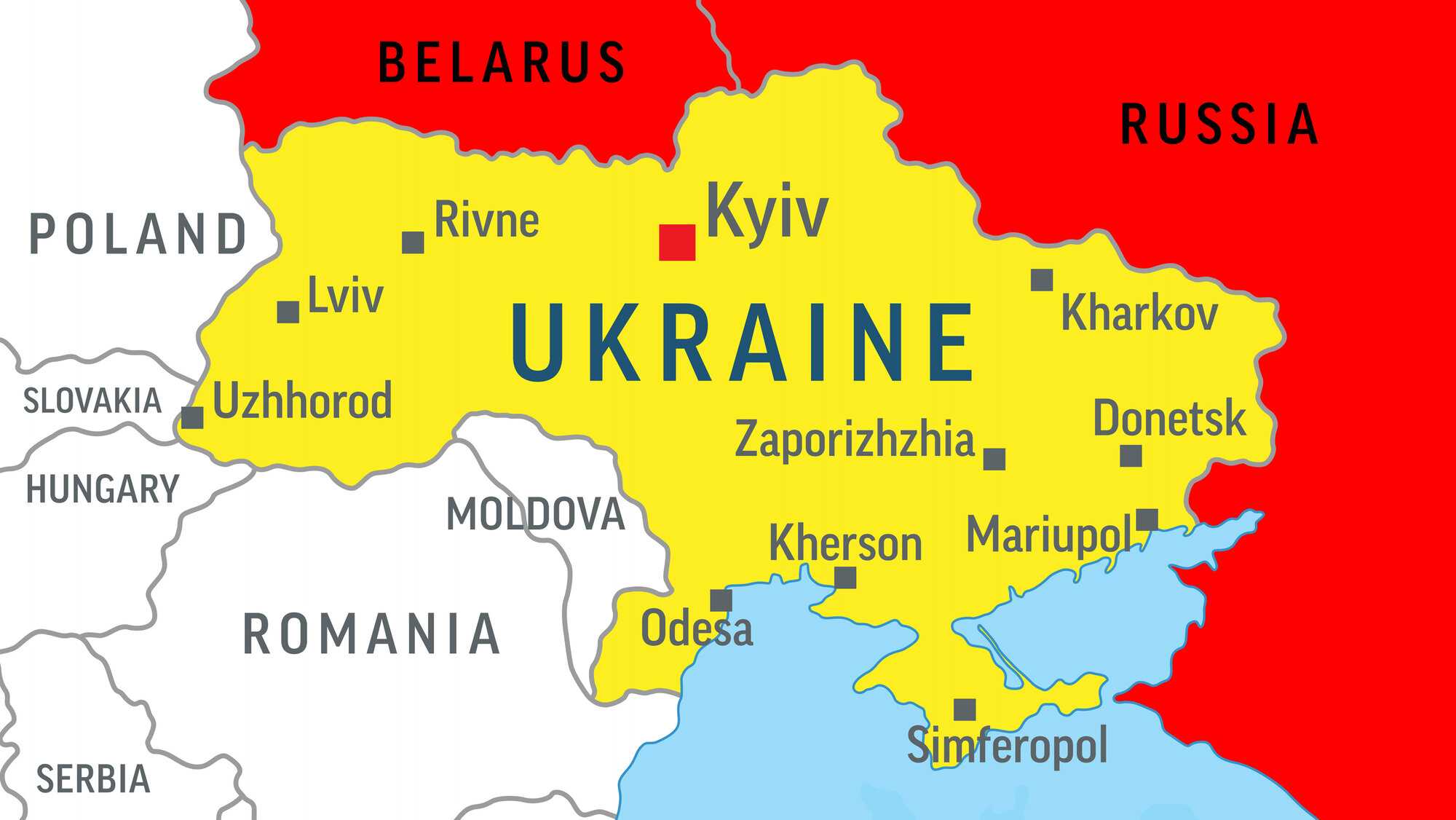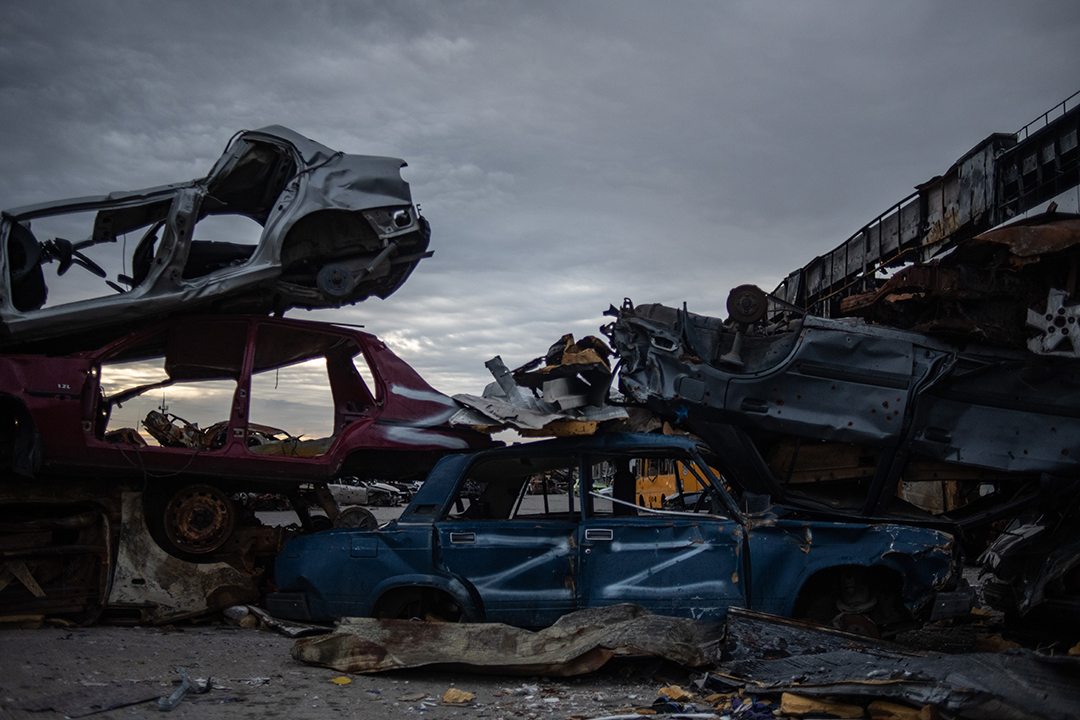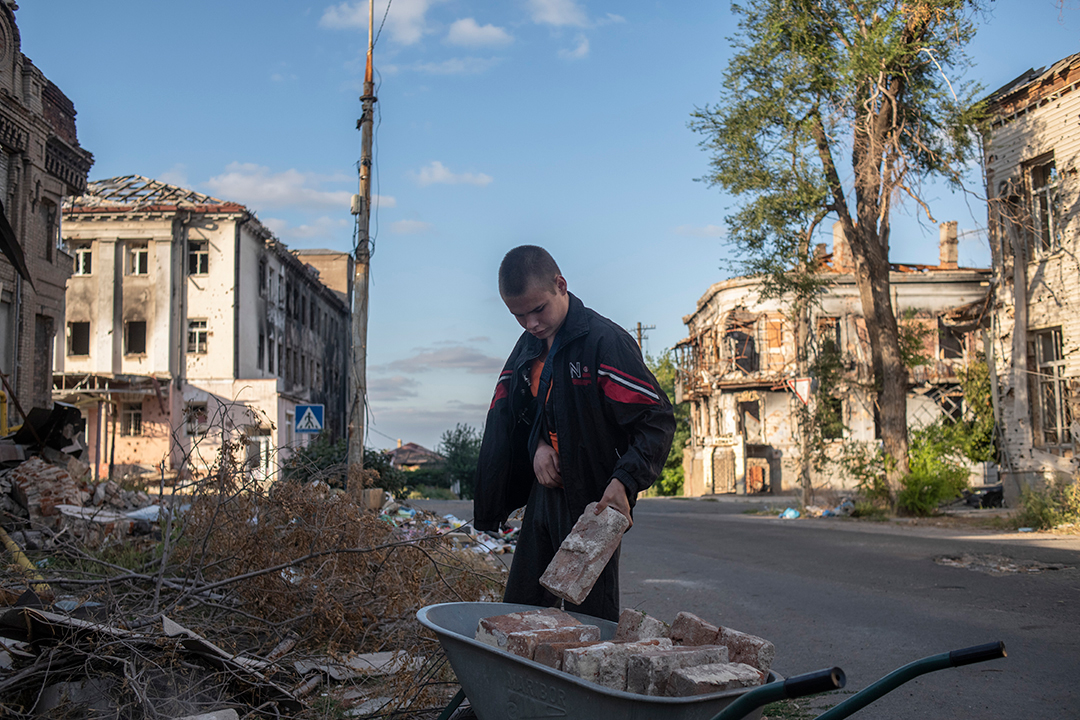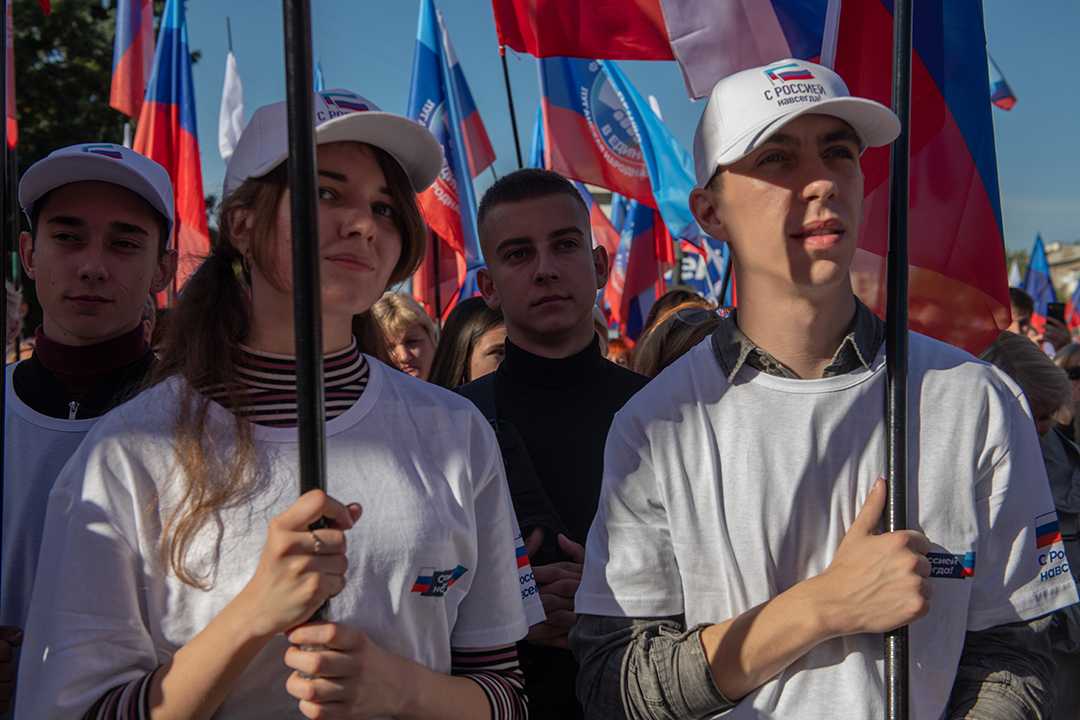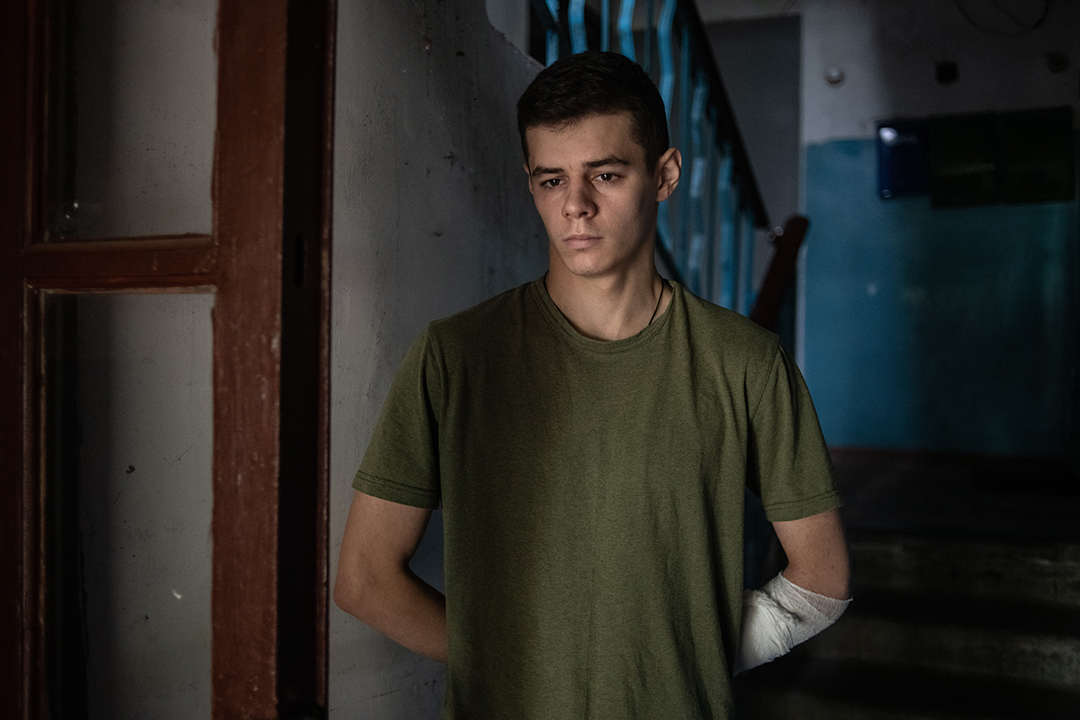This article was first published on the website of Stern on April 3, 2023.
The young people in these portraits are forced to grow up between the front lines. They live with death, among the ruins, without a clear future. A journey into everyday life in a hard-fought region.
I first travelled to the Donbas eight years ago, when Russia annexed Crimea. That was in the spring of 2014 and the beginning of the war in which, to date, some 12,500 people living in the Donbas region have lost their lives. The Donetsk and Luhansk regions in the eastern part of the country are important economic, industrial and scientific Ukrainian centres; in both, there is a high concentration of heavy industry. One example is Luhansk, which has the largest locomotive factory in Europe. After the Russians invaded, the Ukrainians fought back with all their might until both sides concluded a ceasefire in September 2014. This seemed to freeze the conflict. But in February 2022, the war broke out again.
A region marked by Russian invasion
Since 2014, Luhansk has been controlled by the pro-Russian People's Republic, which is recognised neither by Ukraine nor internationally. I arrived in the city in the autumn of 2022. It looked peaceful: cafés full of patrons, open shops, young, smartly dressed people strolling through the streets. The city centre even seemed a little overpopulated to me, since many residents who had been evacuated before the invasion had meanwhile returned. The numerous "Z" and "V" symbols on cars and T-shirts were very noticeable. For whatever reason, the Russians had marked parts of their uniforms and combat vehicles with these symbols. Although no one except the Russian army leadership knows exactly what they mean, they tell you right away who is on the Russians' side.
I was surprised to meet many young 17 to 20-year-old people who were very outspoken and carefree, as if the devastation of their surroundings was their new normal. But perhaps it really seemed normal for them to live in this tension between pro-Ukraine and pro-Russian People's Republic. After all, these young men and women belong to the new war generation: eight years ago, when the war broke out, they were still children.
An outspoken 'new war generation'
I spent a month travelling through the region, talking to them about their lives, their dreams and plans. But I also saw devastated villages near the front line, overcrowded hospitals and people rummaging through ruins for materials to rebuild their homes. When I returned to Moscow, the memories of what I had just seen conflicted with everyday life in the Russian capital. For many people in Moscow, the war seems far removed. If anything, it plays out in images on television showing missiles falling from the blue sky on an invisible enemy. Despite the ongoing mobilisation, the official news channels report on neither the war nor the dead soldiers. The losses were greatest in the poorest regions of Russia, such as Buryatia and Tyva, but there the ban on spreading information about the war was even stricter: journalists were not allowed to attend funerals.
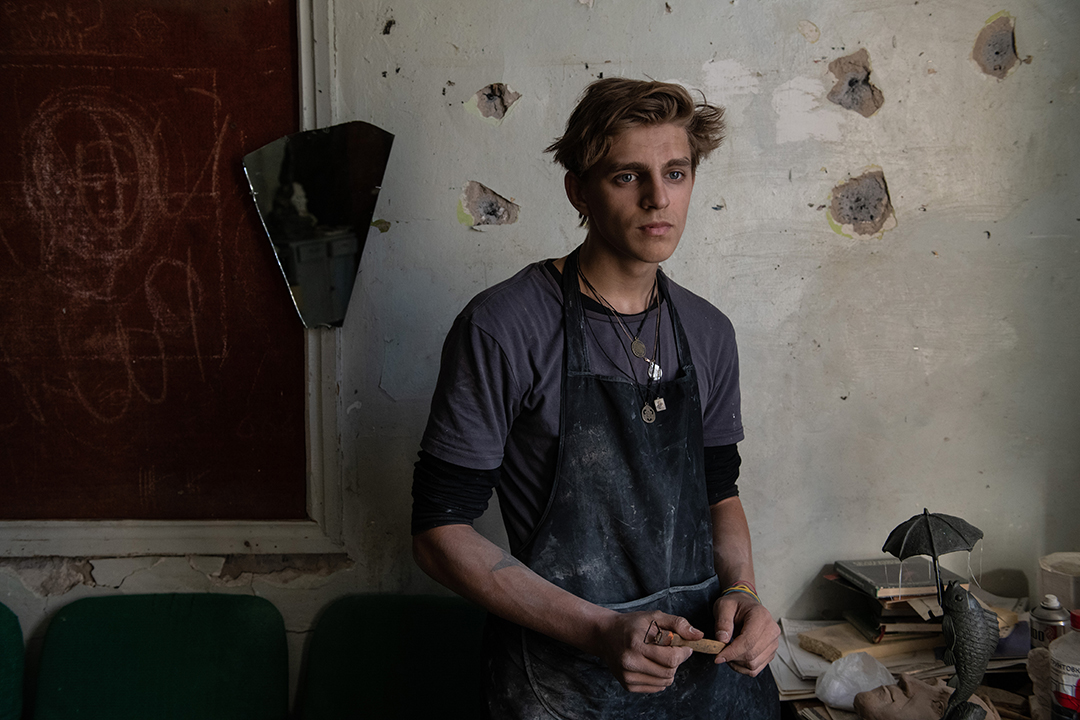
The conflict between Ukraine and Russia divides families
A sunny autumn day in Luhansk. Groups of young men and women chat in front of the Academy of Culture and Art. Among them is 18-year-old Konstantin, who is studying sculpture. Following him into his dilapidated studio, one experiences a creative chaos of half-finished plaster sculptures and pencil sketches on the walls. Before the war, he was part of a large family, but the conflict between Russia and Ukraine divided the members. Everyone argued about the pros and cons of one side or the other, he recalls. With some of them, a compromise could no longer be reached. "When the first shells hit eight years ago, my mother became an ardent patriot and declared that this attack was the result of our lack of support for the Maidan Revolution."
Yet from November 2013 to February 2014, hundreds of thousands had protested in Kiev against Russian-appointed President Viktor Yanukovych, who wanted to overturn a partnership with the European Union. The Maidan, a large square in the centre of Kiev, became a symbol of independence. "There is no unity here in Luhansk either," says Konstantin. "The authorities are trying to instil patriotism in us. But I don't see them succeeding. Their appeal is going unheeded. Many of us young people are trying to run away, to Russia, Ukraine or Europe. But I want to stay and live in Luhansk."
"No one cares about the people who live here"
Eighteen-year-old Ekaterina is part of the group of friends which includes Konstantin. Like him, her family members' views on the war differ greatly. Some of them live in the region where Ukrainian authorities are in charge and avoid contact with Ekaterina and her mother, who are from Luhansk. "When the war started," she says, "I visited them with my mother. But it was impossible to stay there longer; our views were too different."
For people living in peace, it was hard to imagine what someone felt whose town was being bombed. As soon as the situation had eased, Ekaterina and her mother returned home; after all, Luhansk is still their home, admits the young artist, who finds it difficult to talk about the war. "I understand the situation very well: both Ukraine and Russia need these areas, but no one cares about the people who live here. I'm sure it's much more important to think about the people and their future than about politics."
Although still a student, Ekaterina's friend was drafted into the army of the People's Republic, as were some lecturers at the Art Academy. One of them is said to have fallen.
Working as a military doctor for Russian troops
Lisa, 19 years old, studies medicine, donates blood for those wounded in the war and stands out because of her T-shirt with the letter "Z", the symbol used by the Russian army in Ukraine to mark military transports and by pro-Russian Ukrainians to indicate their position. She comes from Svatove, a town in the Luhansk region, and shares a room in the student dormitory with a fellow student. The furnishings are modest: two beds face each other, with a table between them. The wall next to Lisa's bed is painted a strong crimson which somehow seems out of place.
Lisa wants to become a military doctor. For security reasons, she prefers not to give the name or location of her university. She was eleven years old at the beginning of the war in 2014. After school, she trained as a paramedic at the Kupiansk Medical College and cared for wounded soldiers in the city's hospital. It was her first experience with military medicine. "Older colleagues attested to my talent for this service!" she says. But because she openly showed that she was pro-Russian, she was denied the diploma because, until the spring of 2022, Svatove was still under Ukrainian control. That changed when Russian troops marched into the city this past autumn.
Lisa is convinced that the Donetsk and Luhansk regions have always belonged to Russia and that Russian rulers in Kiev have always ruled the country. She complains that the Ukrainian authorities have revoked her citizenship for collaborating with the Russian military. Although she still fears for her life, she is determined to study medicine so that she can work as a military doctor for Russian troops.
The port city of Mariupol is an important industrial centre in the Donetsk region, which was controlled by Ukraine until May 2022. After heavy fighting, the city was captured by Russian troops on 9 May. The UN confirmed the deaths of 1,348 civilians, but stated that the actual death toll was probably thousands higher, as 90% of residential buildings had been damaged or destroyed.
Over 90% of residential buildings are damaged or destroyed
The long siege led to a humanitarian disaster as thousands were left homeless. Those who still had a roof over their heads were left without electricity, water and heating. Visible signs of the devastation also include the large number of wrecked cars in many parts of the city.
Eighteen-year-old Daniil is among the many residents of devastated Mariupol who have returned to their homes and are trying to rebuild their lives from scratch. Some are clearing rubble; others are searching through ruins for anything still usable which can be transported by cart or bicycle. The city centre reminds me of photos showing Dresden after the devastating fire attack at the end of the Second World War: almost no house was left in one piece; they were just black skeletons. As I walked through the deserted streets, shards crunched under my soles at every step.
Trying to rebuild their homes
With his father, Daniil picks bricks out of ruins and, with his left hand, puts them piece by piece into a cart. The boy's right hand is held by a special fixative bandage, under which surgical needles can be seen. A bright orange T-shirt and his shaved head make him look like a Buddhist monk.
Daniil lives in a small house in the centre of Mariupol with his mother, sister and stepfather. So far, he has been able to train as a welder at the technical college and take on odd jobs on the side. But all that has become very uncertain since he was wounded by shrapnel in a bomb blast in the immediate vicinity. "I was putting the kettle on the cooker when suddenly a shell exploded. I was thrown back by the shock wave and, when I came to, I felt a ringing in my ears. My little sister was unharmed, thank God, as were other family members."
The shoulder and right arm are badly injured and the healing process is complicated and will take time. "The doctor says that the hand will probably not function fully in future. Who knows what will happen next."
Young students are also drafted and send to the front
After Russian troops have taken the city, houses are built and those few who have remained are offered flats to make a new life possible, even in harsh conditions. The city's pro-Russian administration wants to show that the survivors are cared for and guaranteed a decent standard of living. Before the war, about 500,000 people lived in Mariupol; now, there are about 90,000 left.
At the end of September 2022, a referendum was held in the Russian-occupied territories of Ukraine on whether or not to join the Russian Federation. In connection with this, pro-Russian rallies were organised by the local authorities in the centre of Luhansk. According to the Central Election Committee, almost 100% of all residents are said to have voted in favour of accession, whereby the entire regional territory was under the control of Russian forces.
Voting also took place in hospitals. Among the patients there were soldiers, many of them still young. Eighteen-year-old Vladislav from Luhansk was the youngest among them. Vladislav was studying in his first semester at the University of Luhansk when, on 21 February 2022, all of the male students had to line up on campus and were taken to the children's camp of "Druzhba" near a military training area. After filling in the personnel documents, they were given weapons and sent to the front shortly afterwards.
Soldiers are lucky to get out alive - yet badly injured
The worst ordeal, Vladislav recalls, was the 42 kilometre walk from Luhansk to Trekhizbenka across the Seversky Donets River. It was unclear why they had to walk, but orders were orders. The soldiers called it a "death march". Three days later they were moved to the front line, with orders to liberate the Luhansk region.
Vladislav was a messenger during the battles and stood guard in front of the brigade's headquarters. After almost six months, the unit came under mortar fire: many were seriously injured, among them Vladislav. A splinter pierced his ribcage, lodged in his lung and got stuck in the pericardium. The ulna in his forearm was shattered, as was a hand. Vladislav was lucky to get to the military hospital immediately, where his hand was literally reassembled from pieces. "I don't know what will happen next week. But since the referendum I am more confident about the future. First, I have to get back on my feet and recover fully. I have no regrets about joining the army. I knew who and what I was fighting for."
At the end of the rehabilitation period, the military commission would decide his fate. Should it declare him fit for service, he would be sent back into combat. "War changes people greatly. When I felt all this first-hand, I began to appreciate what I had not appreciated before: my life."



